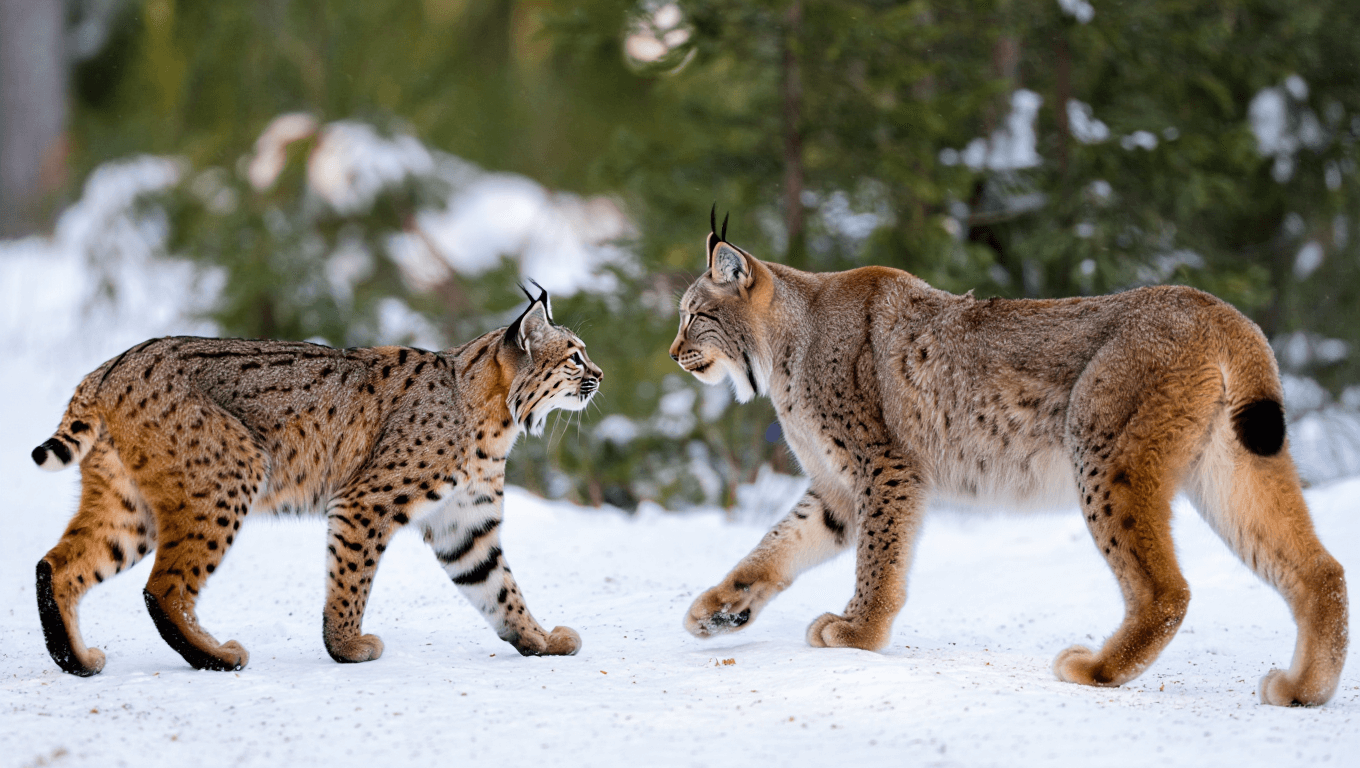The nuances between the bobcat and the European wildcat often get lost in translation, quite literally. In the English-speaking world, the term “wildcat” is broadly used to describe various wild felines, leading to confusion between these distinct species. While they may share a family and some physical traits, bobcats and European wildcats are fundamentally different in genetics, habitat, and lineage. This mix-up extends beyond terminology as these animals are often mistakenly identified due to common names crossing language barriers, adding layers of misunderstanding to their true identities.
Understanding the Bobcat and European Wildcat
Pluto TV’s Hidden Movie Section Rivals Premium Services
Korean Netflix Has 200+ Shows US Version Doesn’t Stream
Bobcats, scientifically known as Lynx rufus, are native predators of North America. Their range stretches from northern Mexico to southern Canada, adapting to diverse environments from boreal forests and coastal marshes to arid deserts and shrublands. Their fur, typically beige or brown with reddish hues and dark spots, helps them blend into their surroundings. Distinctive features include facial tufts, ear tufts, and a short tail with a white underside, characteristic of the Lynx genus.
European wildcats, classified as Felis silvestris, hail from a lineage that spans Europe, Asia, and North Africa. Direct ancestors of the domestic cat (Felis catus), these wildcats bear a closer resemblance to a robust house cat rather than a lynx. They sport a flat, broad head, long legs, and a thick, ringed tail, with a coat that’s typically grayish with a yellow tinge and striped pattern.
Distinctive Traits and Behaviors
Netflix reveals economics behind 3-season cancellations as viewership metrics drop
YouTube Premium Originals Nobody Talks About Are Award-Winning
Physical and Behavioral Differences
Bobcats are considerably adaptable in terms of habitat and prey. They can traverse large distances to hunt significant prey like rabbits and even young deer. In contrast, the European wildcat has a more restricted diet primarily consisting of rodents, birds, and small mammals, aligning with its predominantly nocturnal and solitary nature.
Reproductive Variations
Reproductive habits also underscore their differences. Bobcats typically mate in winter, with a gestation period lasting 60 to 70 days and litter sizes ranging from two to four kittens. European wildcats, on the other hand, usually breed once a year in spring—or up to three times in regions like Scotland—with gestation lasting about 68 days and litters of three to six kittens.
Communication Methods
Communication styles vary significantly between the two species. Bobcats rely heavily on olfactory and visual signals like scraping, urine, and feces to mark their territory. European wildcats are more reserved, minimizing their communication to subtle gestures and postures over short distances.
Genetic and Evolutionary Context
Despite their shared family, Felidae, bobcats and European wildcats diverge notably in their evolutionary paths. Bobcats belong to the broader boreal lineages of the Lynx genus, adapted to colder climates alongside relatives like the Canadian lynx and the Iberian lynx. Conversely, the European wildcat is closely related to the domestic cat. Notably, the African subspecies Felis silvestris lybica is recognized as the progenitor of the first domesticated cats over nine thousand years ago.
In summary, while the bobcat and European wildcat might share some similarities in appearance and basic behaviors, their differences are as distinct as their geographical origins. Understanding these nuances helps clarify the identities of these often-confused feline species, ensuring they are accurately recognized and appreciated in their respective habitats.

Daniel Harris is a specialist journalist focused on the crossroads of breaking news, extraordinary history, and enduring legends. With a background in historical research and storytelling, he blends timely reporting with timeless narratives, making complex events and ancient myths resonate with today’s readers. Daniel’s work often uncovers surprising links between present-day headlines and legendary tales, offering unique perspectives that captivate diverse audiences. Beyond reporting, he is passionate about preserving oral traditions and exploring how extraordinary stories continue to shape culture and identity.

